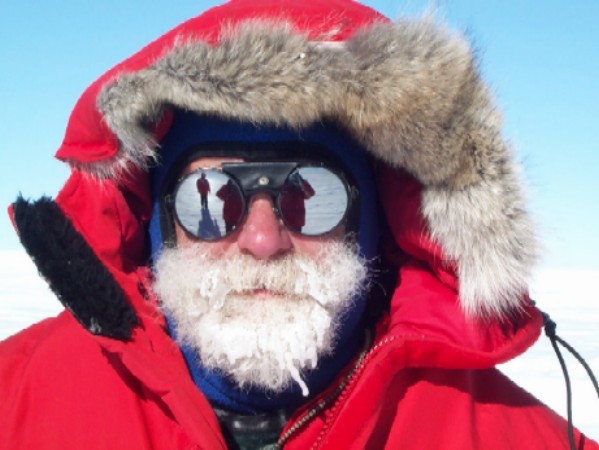
Antarctica, '07-'08 Season

Antarctica, '07-'08 Season
Season 12 for me. We are back in McMurdo after a very
successful trip to Patriot Hills, on the far side of the West Antarctic. I am working with the POLENET
project this season, deploying seismic and GPS stations all over the place.
For maps and other information on POLENET,
click here. We have
installed seven seismic sites so far.
Don
Updated; 8 February, 2008
email;
voigt@geosc.psu.edu
8 February, 2008; Lonewolf was the last station we have been able to install. It has become very frustrating getting ready every morning at 6:15 and being delayed at 7:15. We usually have to wait till 10 or 10:30 before the flight is officially canceled. The weather along the Transantarctic Mountains has just been awful, and we need it to be good at both the field site and a fuel cache in order to fly. Because of the distance we fly it is necessary to visit a place where fuel had been staged. This is done either by LC-130, by airdrop from an LC-130, or by surface traverse. Any way you do it, there is a giant leap of faith when you fly to a fuel cache that may or may not be at the coordinates someone wrote down for you, and may or may not be buried under snow drifts and hidden from view. Not only that, but some of our equipment was placed at one of the caches early in the season in order to save weight on the flights out. That means we have to get to that cache to do the sites.
Meanwhile, ship off load continues and town starts to empty out. We are finished flying on Monday the 11th no matter what happens; the Otters are headed north. I expect to be on the 13th northbound, then home on the 15th. Check back this afternoon. If/when we are cnxed for the day I will add some pictures. In other news; repairs to the Basler are almost complete and they plan to fly it out in the next few days.
3 February, 2008; Hi all; thanks for all the notes of concern. We are still flying, at least for another week when the Otters depart the continent. We have 11 flights left to do in 6 days, this should be interesting. Fortunately we don't all go on every flight, some of them are cargo only and others only require 2 or 3 people. On Thursday we installed GPS and seismic stations at Lonewolf Nunatak, basically a hunk of rock sticking up through the ice at the top end of the Byrd Glacier. It was a really pretty spot with a landing on "blue ice". This is glacial ice that is exposed due to high winds that blow all of the snow off the surface. The frame below is from a video of the landing at Lonewolf, I just can't figure out how to make the video work. We came in past the nunatak and over the wind scoop with full flaps.
The
installation went well and the winds stayed down which was good because it was
about 0 F. We flight was 2 hours each way and it took 5 for the installation. It
makes for a long day, and by the time we shuttle out to the skyway and back it
turns into11 hours. Fortunately, we made it back for pizza night. Below is
a photo of the seismic station at Lonewolf with the Otter in the background.
Other than that, we have not had much to do. I have been hiking almost every
day. There are two very accessible trails, both about 2.7 miles long, with great
views of the Royal Society Range and the sea ice. I have also been in the weight
room almost every day. It is rudimentary, but complete and always available.
We are also trying to get everything ready in town so we can leave as soon as
the flying is complete. We have equipment to return and cargo to prepare
for shipment north.
The ice breaker has been working the channel and we have seen minki and orca
whales in the open leads. The tanker finished and left, and the cargo vessel is
on the way in. Evidently there is about 650 km of pack ice north of us, even
though the edge of the sea ice is close. The cargo ship is having a tough time
getting through.
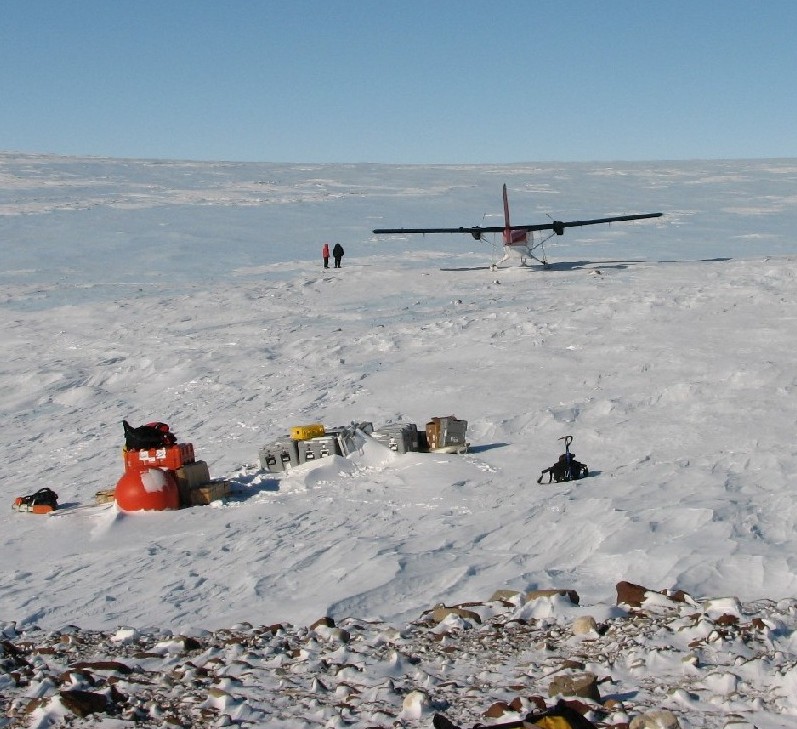
27 Janurary, 2008
We are back from Patriot Hills. It's kind of a strange time in McMurdo. The weather has been chilly and damp
(by Antarctic standards) and it seems to be getting noticeably colder every day.
The field camps are pulling out and people are streaming north . The ice
breakers have cut the channel and the south wind has blown a lot of ice out.
There is open water off the station and a few whales are about. The Natty B.
Palmer (the NSF science vessel) is in today to change crews then the tanker will
come in on Monday. As soon as the tanker leaves the cargo ship comes in for
"ship offload". It's not a good time to be a pedestrian in McMurdo with
containers being moved about and stashed everywhere. Hopefully we will be flying
during all of that.
It has been difficult to stay mentally prepared for the coming flights after the
ups and downs of the season. We spent about 3 hours today (Sunday) getting
equipment and tools ready for tomorrow in case we get the call to fly. We are
back-up for the Twin Otter on a flight to Lonewolf Nunatak about 300 miles from
here, two hours by air. It should look similar to this picture of Pecora
Escarpment taken by Peter Braddock, our mountaineer, guide, guru, and mentor.
The Patriot Hills

The Patriot Hills evolution was quite interesting. The camp is run by ALE, a commercial outfit. Most of the guests were tourists paying large sums to go to South Pole. Some ski the last degree or two to Pole, others just fly there and back. Others were jumping off to climb Mt. Vinson or to ski or climb in the Elsworth Mountains. At one point I counted people from 21 different countries. The staff uses a combination of Chilean Spanish, Norwegian and English interchangeably. It was strange hearing Spanish spoken with a Norwegian accent!
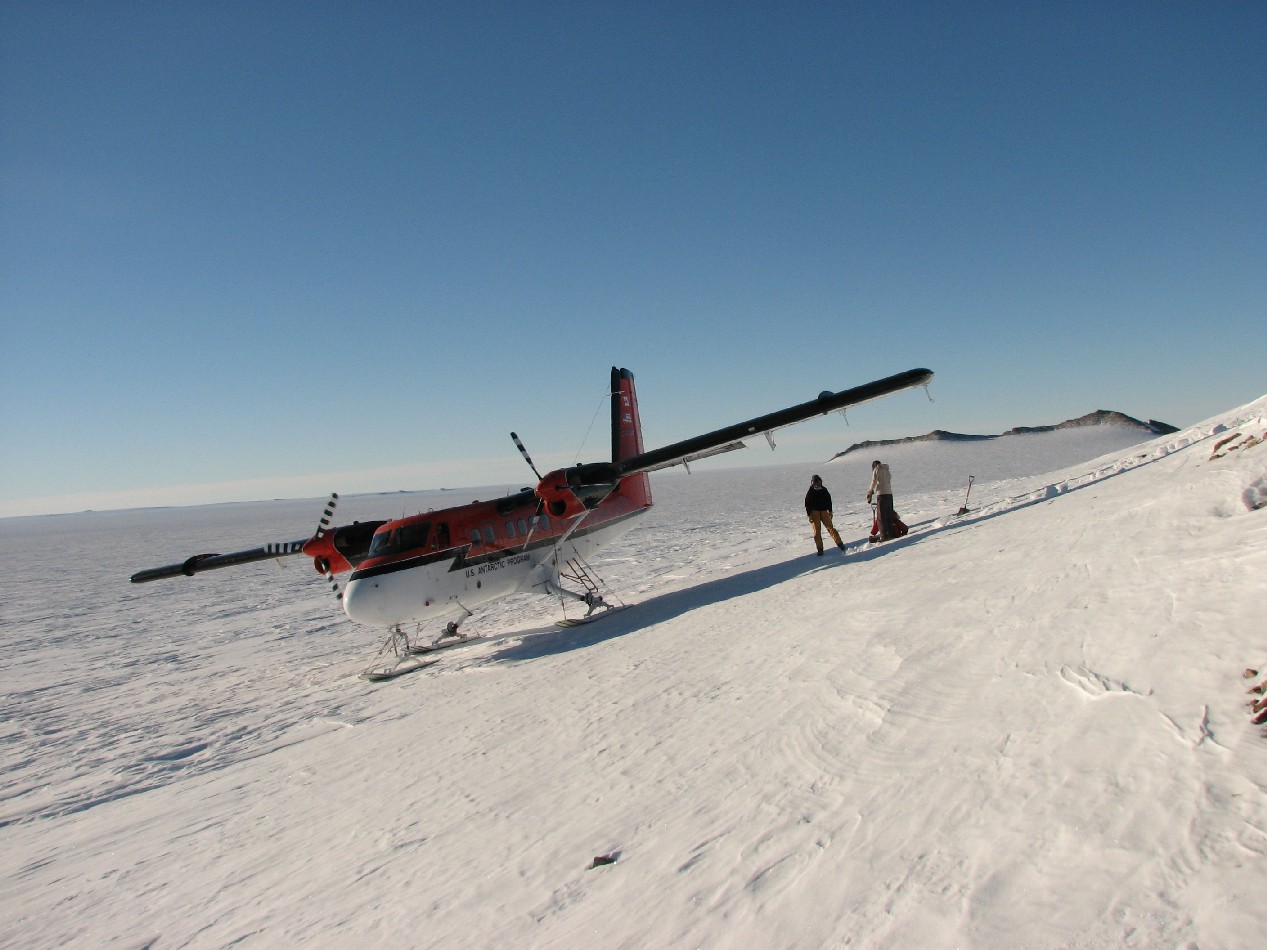
Dufek Massif where we parked on a bit of a slope. This is an amazing area of very unusual rocks.
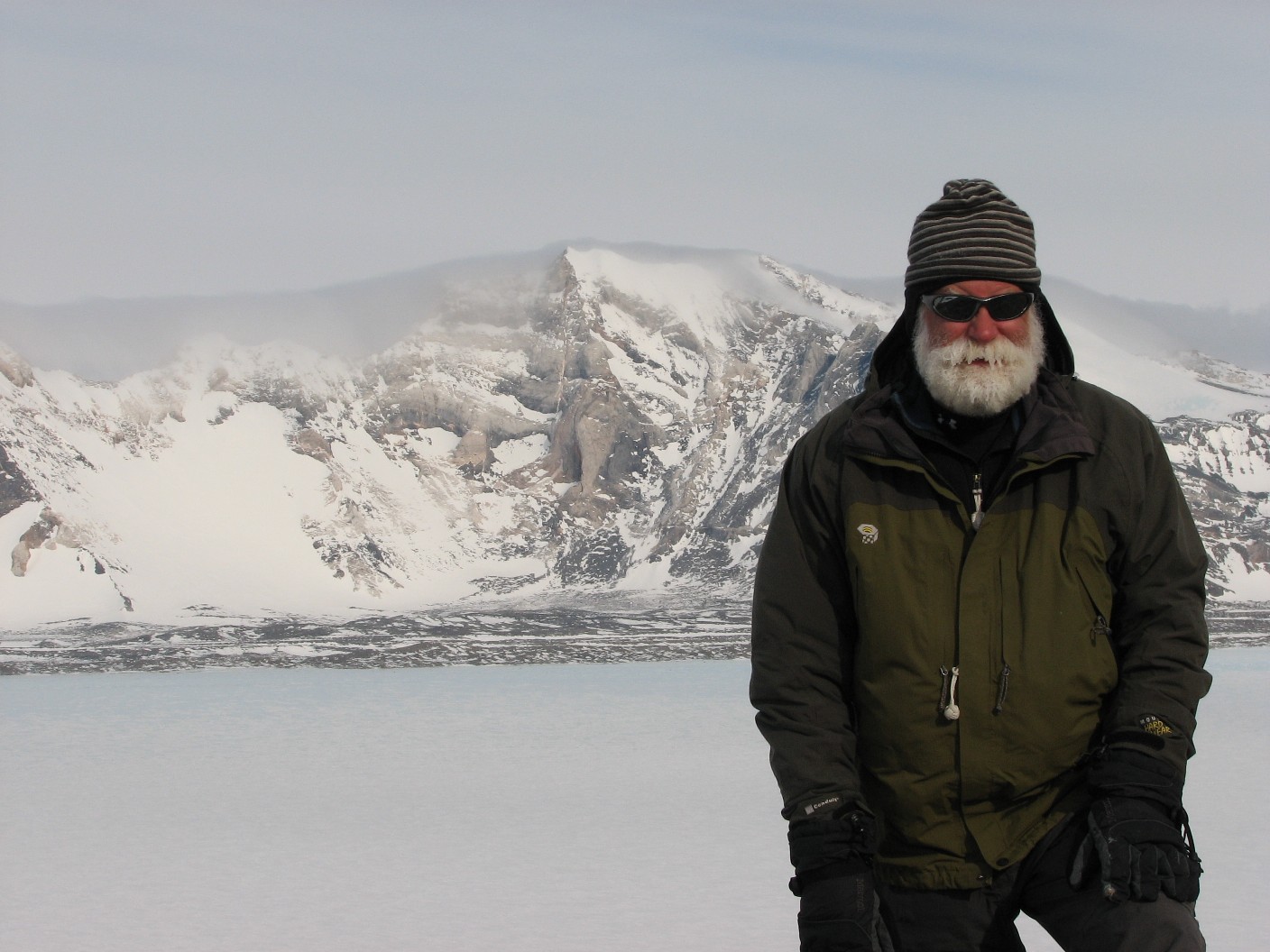
On the ridge of Patriot Hill with the ----- range in the background. There were some interesting cap clouds on the peaks that day.
24 December, 2007
Mount Paterson; The Basler Crash

After completion of the seismic and GPS station at Mt Paterson, we had a little problem. We were attempting to take off, moving from right to left in the picture, and may have caught the left wing tip. The skis and landing gear tore off and we came down hard, sliding sideways another 80 meters or so. No injuries and we were pulled out by Twin Otter about 20 hours later and returned to McMurdo. Thanks to all those who worked so hard to get us out of there. Other than being hungry and tired, we were all fine.

Notice that the props stayed on. Boy, were we happy about that! The weather was very good for over 16 hours until about 30 minutes before SJB arrived, then the winds picked up. By the time we left the site the winds were cranking at 15 knots. The first Otter, piloted by Jim, came from South Pole with the mountaineer/medics, Thai and Tayloe, and food. Brian flying KBG from McMurdo arrived soon after. Below is a photo of SJB and the Basler.
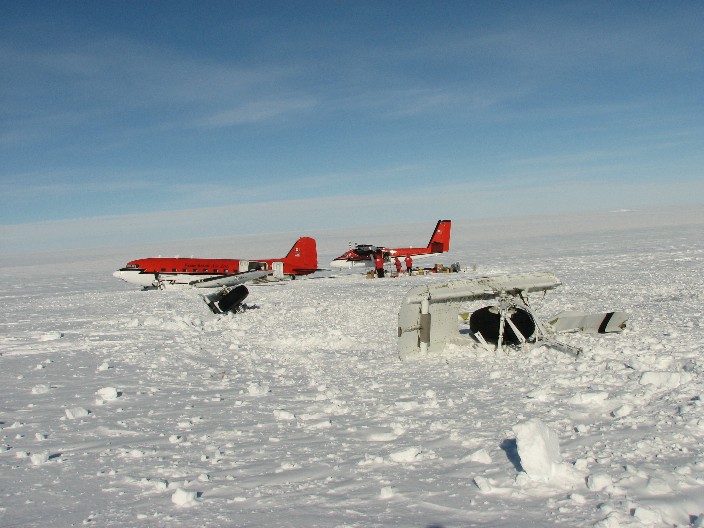
Links to the story of the Basler crash;
2002-2003 Season
Our team was in the field from 20 November until 14 January working out of the Onset D camp and moving around by snowmobile. Using seismic techniques, we have been profiling the upper ends of the ice streams. In particular the “onset” regions where the ice changes from slower flow to “streaming” flow. The picture of our traverse to Ice Steam C will lead to a page for the season.
Greenland, June 2003
Over the summer I had the privilege of working with Sarah Das and Jay Kyne (below left in the Twin Otter) on the ice cap in Greenland where Sarah had a project drilling two, 80 meter ice cores. She is looking at the formation of melt layers and what it says about climate when we find them in an ice core. The next picture is Jay at the controls of an old PICO 4" drill. Jay inside the "Arctic Oven" eating dinner; we resorted to dehy because it is light and fast. Working in Greenland was quite an experience, especially the climb out of Kulusuk on the east coast.
LINKS;
Tides - Penn State University, NASA, http://www.geosc.psu.edu/~sak/Tides/index.html
ONSET D - Penn State University, U Texas, British Antarctic Survey, http://www.geosc.psu.edu/~sak/Onset/index.html
ANUBIS - Penn State University and University of Alabama http://www.geosc.psu.edu/~sak/Anubis/index.html
TAMSEIS - PSU, UA, and Washington University of St. Louis http://epsc.wustl.edu/seismology/TAMSEIS/
Research Penn State article about our '01-'02 season http://www.rps.psu.edu/antarctica/
The British Antarctic Survey (BAS) site is at http://www.antarctica.ac.uk/
Bob Greschke’s site (PASSCAL) http://www.passcal.nmt.edu/~bob/passcal/antarctica